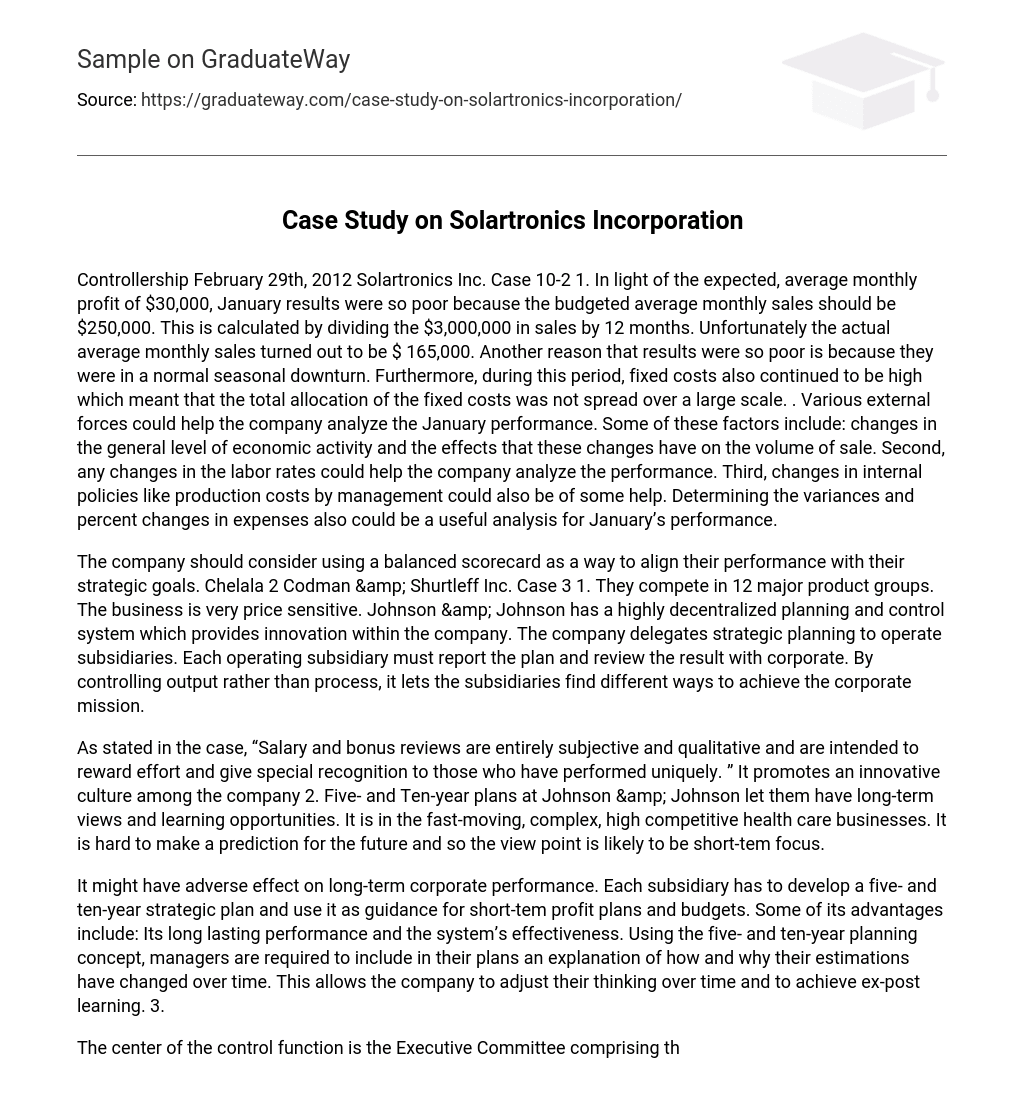In light of the anticipated, typical monthly profit of $30,000, the January outcomes were significantly disappointing. This was due to the fact that the projected average monthly sales were supposed to be $250,000, which is determined by dividing the total sales of $3,000,000 by 12 months. Unfortunately, the real average monthly sales only amounted to $165,000. One contributing factor to these poor results was the normal seasonal downturn experienced during this period. Additionally, the fixed costs remained high, resulting in a limited spread of the total fixed costs. Various external factors can be considered to analyze the January performance of the company.
Some factors that may impact the company’s analysis of January’s performance include changes in the general level of economic activity and the resulting impact on sales volume. Additionally, changes in labor rates and internal policies, such as adjustments to production costs by management, can provide insight into performance. Analyzing variances and percent changes in expenses can also be beneficial for evaluating January’s performance.
Johnson & Johnson competes in 12 major product groups, and the company is highly price sensitive. Their planning and control system is decentralized, allowing for innovation within the company. Strategic planning is delegated to operating subsidiaries, which must report their plans and review their results with the corporate office. By focusing on output rather than process, Johnson & Johnson allows subsidiaries to find unique ways to achieve the corporate mission.
The case emphasizes that salary and bonus reviews are subjective and qualitative, designed to recognize and reward unique efforts. This approach promotes an innovative culture within the company.
Johnson & Johnson benefits from their long-term perspectives and learning opportunities in the fast-paced, intricate, and highly competitive health care industry through their Five- and Ten-year plans. However, due to future uncertainty, a short-term focus is also anticipated.
By implementing this approach, there may be negative consequences for the overall corporate performance in the long run. To adhere to this strategy, each subsidiary needs to create a strategic plan that spans five and ten years. This plan will serve as a framework for short-term profit plans and budgets. Adopting this method has various benefits, including sustained performance and an effective system. By incorporating the concept of planning for five and ten years, managers are required to justify and explain any changes in their projections. This allows the company to adjust its mindset over time and promote experiential learning.
The control function revolves around the Executive Committee, consisting of the chairman, president, chief financial officer, vice president of administration, and eight other members. The company’s success depends on this decentralized structure as each subsidiary reports to a member of the Executive Committee.
Every company establishes its own plans and strategies for a duration of five years. The managers are responsible for defining their objectives and taking ownership of their actions. They subsequently strive to achieve these targets through independent decision-making. This organizational culture does not accept any justifications for failing to meet the set goals.
Johnson’s planning and control system aligns well with the business by encouraging a decentralized yet accountable and innovative culture. It fosters a learning organization focused on long-term growth. The selection of systems is based on company needs, with Johnson & Johnson aiming to boost innovation. However, it is crucial to acknowledge that certain weaknesses in the system could potentially harm corporate performance.
The process’s control by the system is restricted, and if the system becomes more diverse and complex, Johnson & Johnson may lose crucial controls over its subsidiaries. Moreover, there is a coordination weakness in the planning system. Since multiple companies in the same market compete, the system might not adequately prevent one operating subsidiary’s strategy from endangering others, resulting in undesirable competition between them.
If I were designing a reward/incentive system, I would compensate Mr. Black and the board based on their long-term performance and execution of plans. If they were to consistently execute a long-term plan without any deviations, their compensation should be substantial. Additionally, compensating them based on long-term performance contributes to the company’s overall solvency. This is because the company’s liquidity is not always stable. It is more crucial for the company’s overall well-being to have sustained growth and performance. Therefore, implementing long-term compensation prevents Mr. Black and the committee from having conflicting goals or desires.





